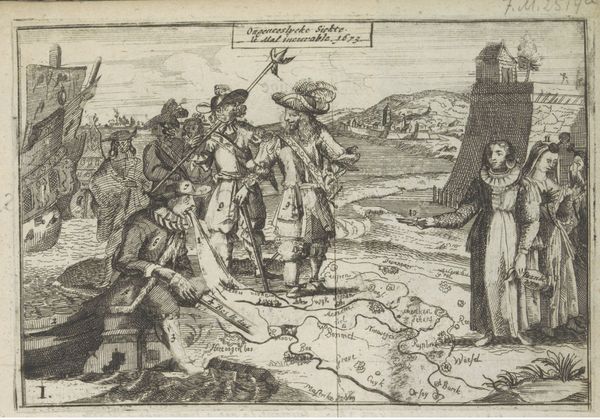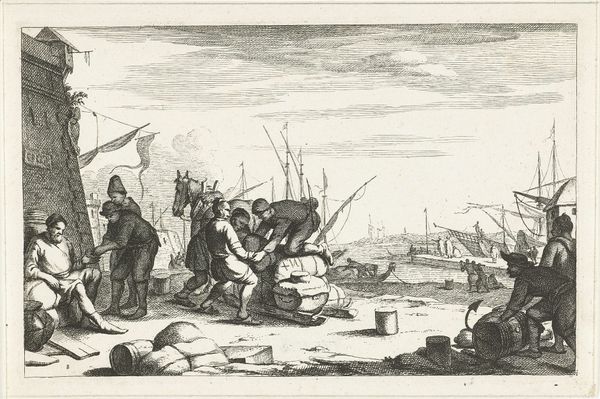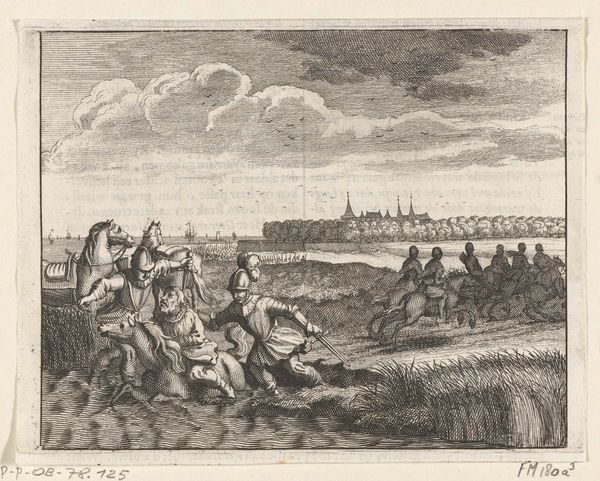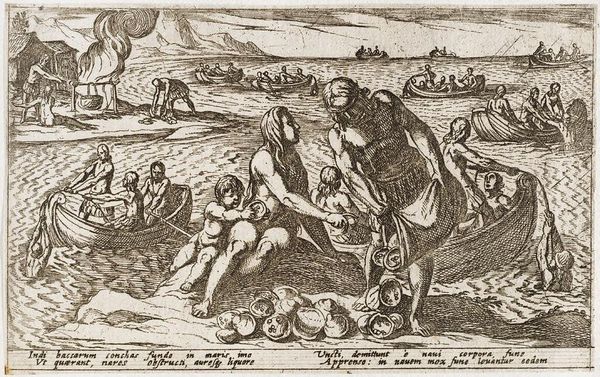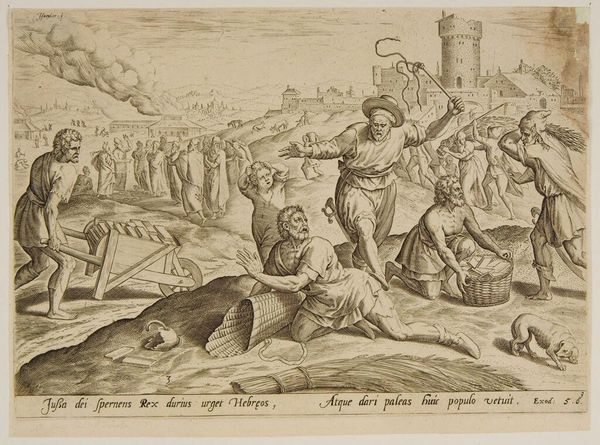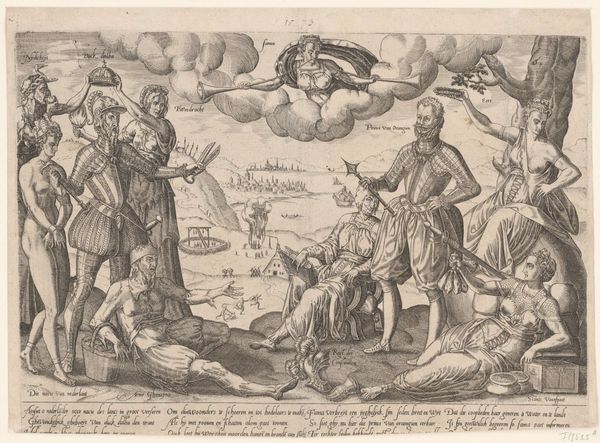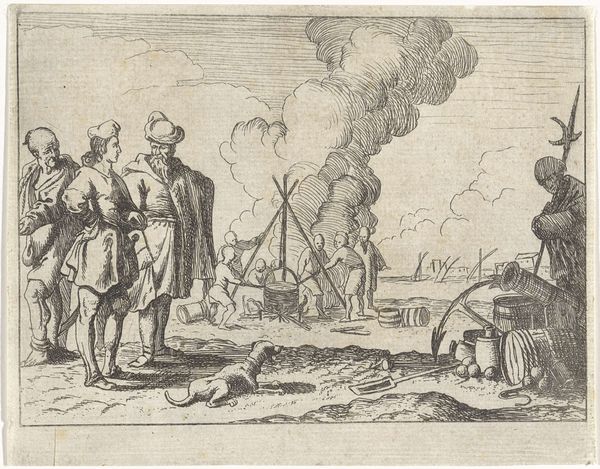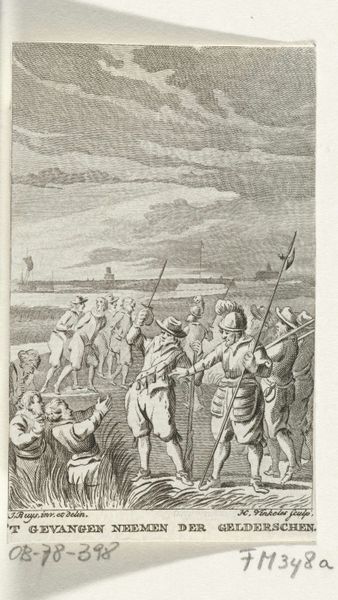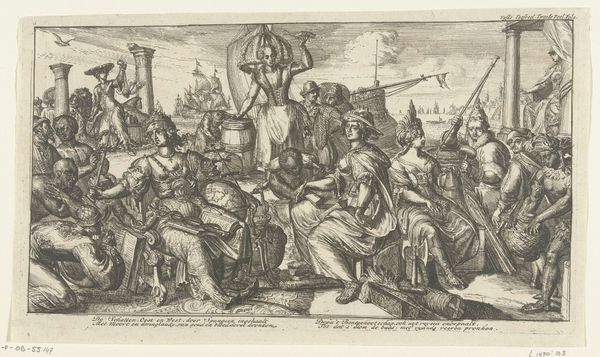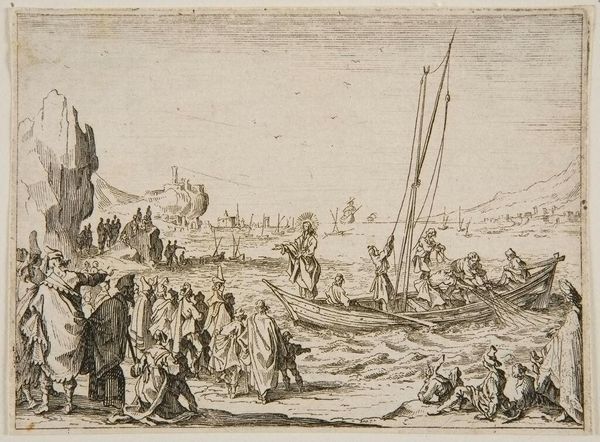
engraving
#
baroque
#
old engraving style
#
landscape
#
history-painting
#
engraving
Dimensions: height 151 mm, width 194 mm
Copyright: Rijks Museum: Open Domain
Pieter Pickaert made this print in 1691, depicting William III arriving at Oranjepolder. Prints like this played a crucial role in shaping public perception and consolidating power. Consider it as early modern propaganda, crafted to present William, the King of England, Scotland, and Ireland, in a heroic light during a period of intense political maneuvering. The image creates meaning through visual codes tied to the cultural and historical context of the Netherlands at that time. Geography is relevant here. Low-lying regions like Oranjepolder were of strategic importance, and controlling these territories was vital for trade and defense. The print subtly asserts William's authority over these lands. Institutional histories are relevant too: the print serves the purpose of memorializing the moment and shaping its perception for future generations. By studying period documents, pamphlets, and other visual representations, we can start to see the image as part of a broader narrative about the construction of power and national identity in the early modern period.
Comments
No comments
Be the first to comment and join the conversation on the ultimate creative platform.
